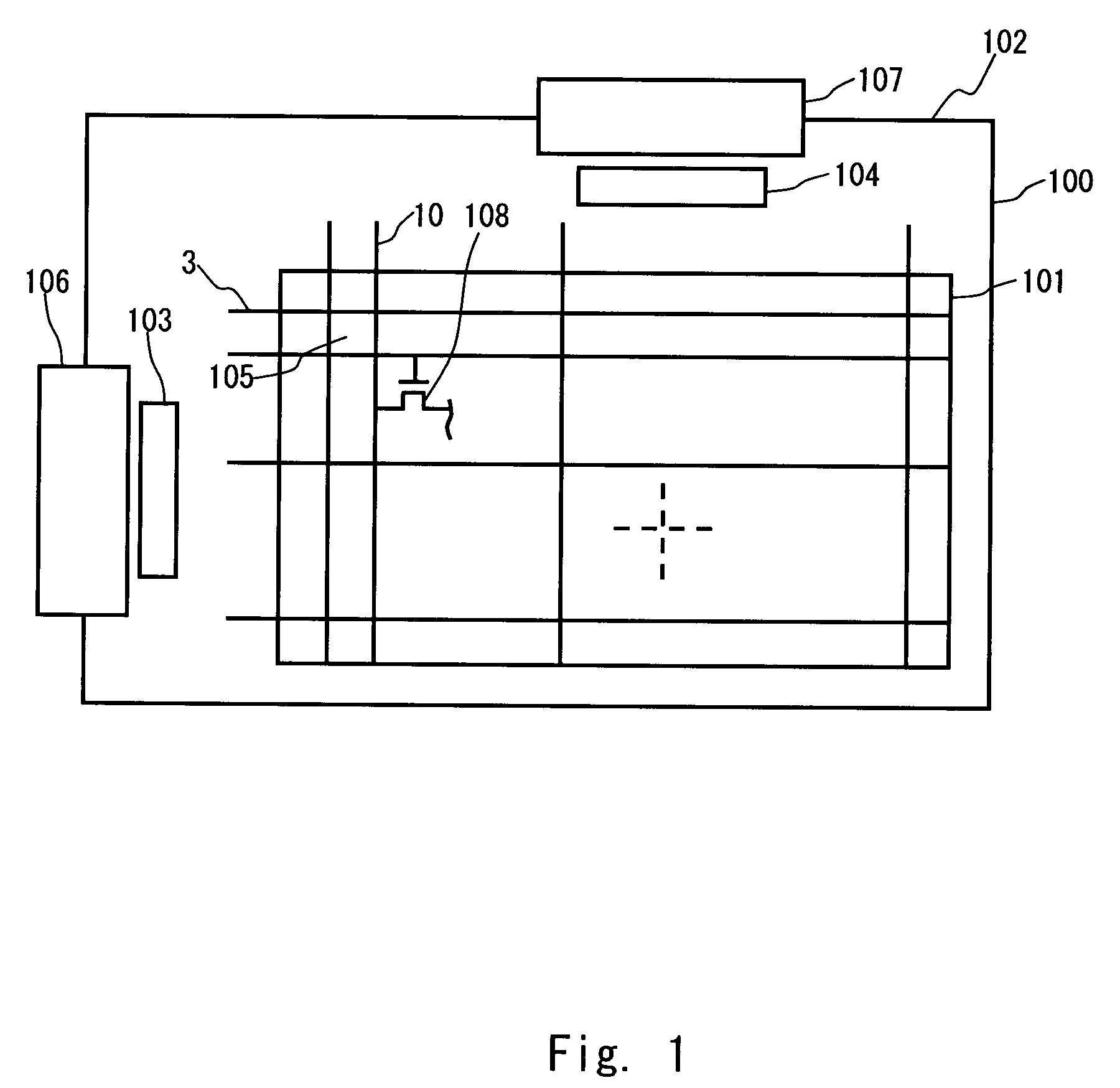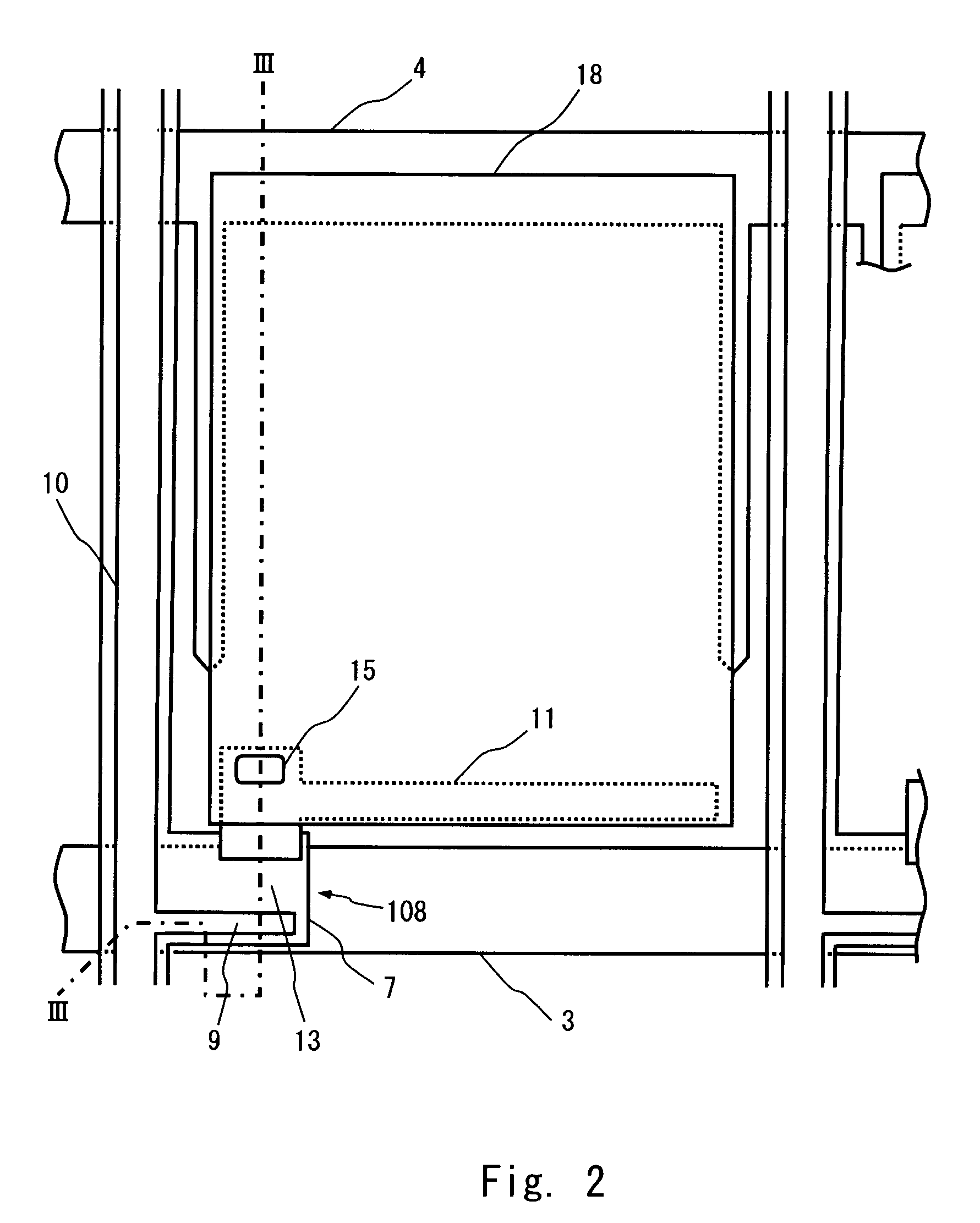TFT array substrate and method of manufacturing the same
a technology of array substrate and substrate, which is applied in the field of tft array substrate, can solve the problems of reducing the mobility of tft, hindering the achievement of large-size tft-lcd, high-definition and high-speed response, and the inability to establish a direct contact between al and nsup>+/sup>a-si, so as to improve the coverage characteristics of the gate and improve the heat resistance
- Summary
- Abstract
- Description
- Claims
- Application Information
AI Technical Summary
Benefits of technology
Problems solved by technology
Method used
Image
Examples
first embodiment
[0026]The structure and manufacturing method of a TFT array substrate according to a first embodiment of the present invention are described hereinafter with reference to the drawings. FIG. 2 is a top plan view showing the structure of a pixel of a TFT array substrate according to this embodiment, and FIG. 3 is a cross-sectional view along line III-III in FIG. 2. FIG. 3 further shows a gate terminal portion and a source terminal portion on the left part thereof. The TFT array substrate of this embodiment is used for electro-optic displays, and a liquid crystal display is described hereinbelow as an example.
[0027]A gate electrode 2, a gate line 3, an auxiliary capacitor electrode 4, and a gate terminal 5 are formed on a transparent insulating substrate 1, which is made of glass or the like. The gate line 3 includes the gate electrode 2, and the gate terminal 5 exists at an end of the gate line 3. The gate electrode 2 constitutes a TFT 108, which serves as a switching device. The auxi...
second embodiment
[0057]The TFT array substrate according to a second embodiment of the present invention is used for electro-optic displays, and a liquid crystal display is described hereinbelow as an example. The top plan view and the cross-sectional view of the TFT array substrate are the same as those in the first embodiment shown in FIGS. 2 and 3. The structure of the TFT array substrate is the same as that of the first embodiment except for the material of the first and second metal thin films, and the description is not repeated herein. In this embodiment, an alloy film composed mainly of Mo or a pure Mo film is used as the first and second metal thin films. Thus, the gate electrode 2, the gate line 3, the auxiliary capacitor electrode 4, the gate terminal 5, the source electrode 9, the source line 10, the drain electrode 11 and the source terminal 12 are made of an alloy film composed mainly of Mo or a pure Mo film.
[0058]A method of manufacturing the TFT array substrate of the liquid crystal ...
PUM
| Property | Measurement | Unit |
|---|---|---|
| temperature | aaaaa | aaaaa |
| thickness | aaaaa | aaaaa |
| thickness | aaaaa | aaaaa |
Abstract
Description
Claims
Application Information
 Login to View More
Login to View More - R&D
- Intellectual Property
- Life Sciences
- Materials
- Tech Scout
- Unparalleled Data Quality
- Higher Quality Content
- 60% Fewer Hallucinations
Browse by: Latest US Patents, China's latest patents, Technical Efficacy Thesaurus, Application Domain, Technology Topic, Popular Technical Reports.
© 2025 PatSnap. All rights reserved.Legal|Privacy policy|Modern Slavery Act Transparency Statement|Sitemap|About US| Contact US: help@patsnap.com



